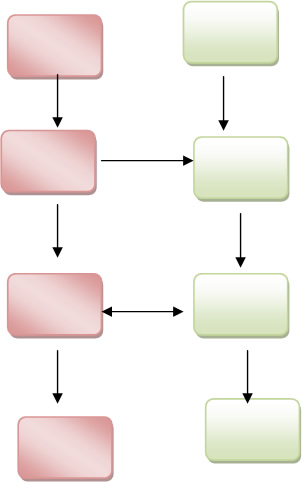Element 4 - Aspect 2 - Strategies
Teacher Education – Pre-service
Element 4
Aspect 2: Assessment
Strategy 1
Activity
Design principles & elements (.ppt file, 13MB)
Purpose
To enhance student's understandings of the two main design principles: function and aesthetics.
Description:
A short PowerPoint presentation that outlines design elements associated with design and the two main design principles: function and aesthetics. A number of photographs are included to support these understandings. The PowerPoint also includes photos of two contrasting sets of drinking glasses. These images can be used to highlight the way in which we as consumers respond to design.
Using the two sets of images, students can be asked to declare which glasses they appreciate the most and why. Then after some discussion in groups, a class discussion can be used to highlight different attributes regarding function and form or aesthetics such as durability (function) or shape (aesthetics).
Key understandings can be listed on a board to emphasize design preferences. Students quickly realise they either have an aesthetic or functional disposition and of course there are always students that like both or neither! Students enjoy this activity and after responding become more familiar with the two main design principles.
This activity links directly to the powerpoint resource but it could also be used as a stand alone to discuss design principles and elements.
Strategy Resources
- 2010 Strategy Design Principles resource (.ppt file, 13MB)
Source/Acknowledgement
- Ann McGlashen developed the PowerPoint presentation.
- Activity adapted by Moira Patterson using Ann McGlashen's original resource.
Strategy 2
Learning Progression Diagrams
Purpose
To understand how to deliver effective technology education.
Observation Tool
Technology classroom observation tool (PDF, 64 KB)
"The Observation Tool can be used in a variety of ways, including:
- as a starter for discussions with technology teachers
- as the basis of a review about the effectiveness of programmes currently operating within the school
- as a self-review tool for technology teachers
- to inquire into their own practice
- to support school leaders to focus more fully on students learning in technology."
When in a school use the Observation Tool to observe a teacher of technology in the classroom. Bring completed forms back to class
Task:
- Engage in a small group discussion to identify how different schools treat technology education.
- Consider the differences identified and suggest possible reasons why these differences occur.
- Write a further two questions that will supplement the Observation Tool.
Written by Gary O'Sullivan and Wendy Fox-Turnbull.
Strategy 3
Know How II
Video produced by (Copland Wilson- Learning Media 1997) and distributed in 1997 by Learning Media to all New Zealand primary and secondary schools.
View either of Video: Central Mangere (Primary) Tuakau College (Secondary) from the Know How II (Copland Wilson- Learning Media 1997)
Consider the practice undertaken by students in developing their Technological Outcome. Using the information in the video produce a flowchart to outline the students' practice.
Consider the relationship between the practice undertaken by the teacher to support student learning. In a parallel flow chart show the teacher' practice, using the layout overview below

Student Practice Teacher Practice
What is the major difference between the students and teacher's practice?
List what you consider to be the five key aspects of a teachers' role when delivering technology that supported student learning – discuss these to justify their identification.
List what you consider to be the five main responsibilities of students when undertaking their Technological Practice.
Written by Wendy Fox- Turnbull.
Strategy 4
On Technology Online find the student showcases.
Task:
Read through Technology Practice case studies and the Indicators of Progression.
Identify at least one example of a technologist working within each of the Components of Technology.
| Components of Technology | Case Study | Technologists Practice Example |
| Brief Development | ||
| Planning for Practice | ||
| Outcome Development and Evaluation | ||
| Technological Modelling | ||
| Technological Products | ||
| Technological Systems | ||
|
Characteristics of Technology | ||
| Characteristics of Technological Outcomes |
Written by Wendy Fox-Turnbull.
